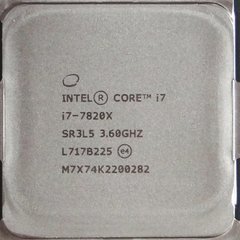VRM temps safe?
15 minutes ago, VagabondWraith said:Oh okay. So how far off do you think it might be?
It depends strongly on the specific material and surface of the VRM and how small you can get the spot size typically IR thermometers are not designed to read tiny spots and it should say on it somewhere how this spot size increases with distance. The quickest way to try to compensate is to stick some masking tape on the VRM to measure it then if it reads much hotter then your getting a more expected reading. (Don't forget the masking tape actually reduces the actual surface temperature by insulating the VRM a bit but the 0.92 emissivity will be much better than an unknown metallic surface)
As others have said just touch the actual VRM bits with your finger if it burns it is hotter than ~45degC and if it does not burn then it is colder. It if really burns then it is likely >60degC. (Beware of ESD obviously) Also the coils (gray/metallic, ferrite) will likely be cooler than the actual switching ICs which are smaller black encapsulated chips very close to the coils (typically labelled with a Q## on the PCB silkscreen).
Most VRMs probably run quite hot and unlike a processor they can usually survive temperatures even at 105+degC max. (That would burn really bad if you touched something that hot). Don't forget with human temperature metallic parts (coils, leads, tabs) will feel hotter than plastic parts (chips) even at the same temperature as you only sense the heat flow not actual temperature. The 45degC comes from the fact that above this temperature human proteins will get cooked and this will cause pain.
Also looking at the PCB back is going to give very hard to interpret readings as the thermal resistances will make it difficult to determine the actual VRM temperature. This is on top of the emissivity problems a metallized PCB will have.
With a fan blowing directly onto the VRM area they are likely getting enough cooling even without a heatsink directly on them. The PCB itself is a sort of metal heatsink and the fans will cool it down accordingly.



















Create an account or sign in to comment
You need to be a member in order to leave a comment
Create an account
Sign up for a new account in our community. It's easy!
Register a new accountSign in
Already have an account? Sign in here.
Sign In Now